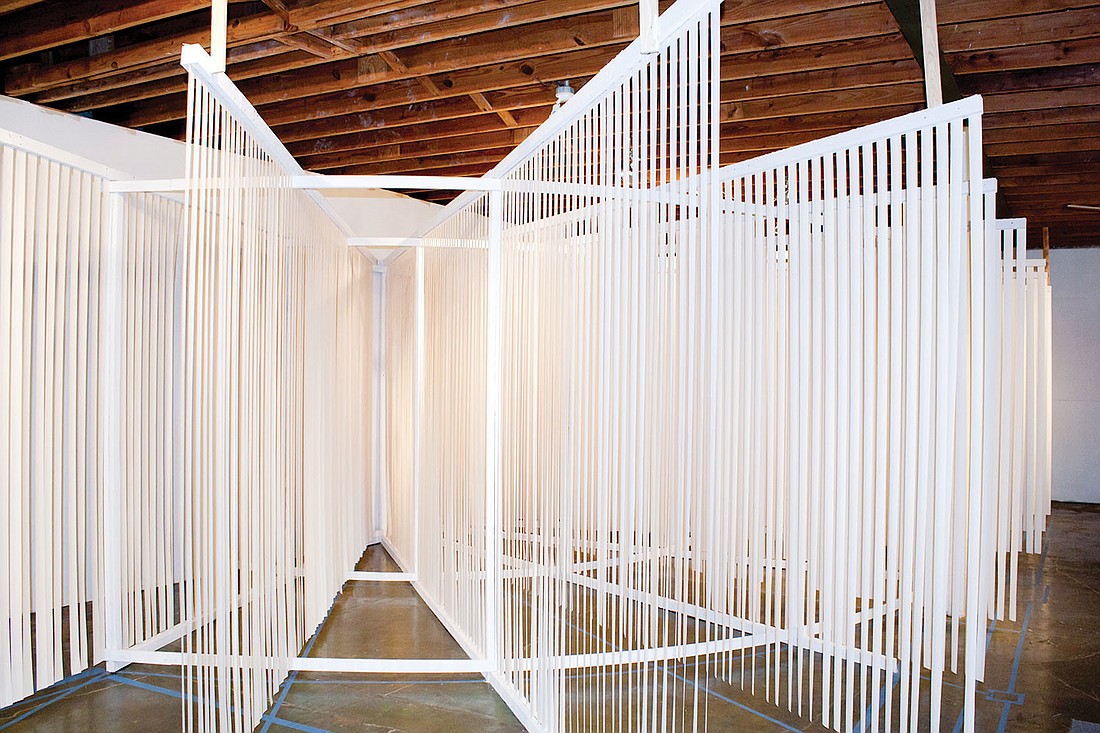- November 27, 2024
-
-
Loading

Loading

People have come to see hundreds of exhibits since Kevin Dean, director of Selby Gallery, a Division of Ringling College of Art and Design, started running it in 1994.
“No one knows what goes into it,” Dean says. “We have five days to take a show down and put (the next) up.”
The current featured installation, Carol Mickett’s and Robert Stackhouse’s “Phases of Identity” exhibit that uses both Selby Galleries I and II for a series featuring two paintings and a sculpture, required an intensive set-up process.
The collaborative duo, based in St. Petersburg, has been working together for more than 12 years, and they seem to have the setup down to a science. This particular three-piece installation, created for Selby Gallery, was built in the artists’ St. Petersburg studio. Getting the sculpture portion of the installation to Selby Gallery took two-and-a-half days.
“We got a 26-foot truck and made sure it had an 8-foot ceiling so (the installation) would fit — but the door wasn’t 8 feet!” Mickett says. “We couldn’t get it through the door.” They ended up having to rent a trailer, instead.
The sculpture portion of their installation, “Breath of Cypress,” features an 8-foot-tall wall, with cypress frames that stem off of each side of the wall, similar to the rays of the sun. The sides mirror each other, but one side is dark and the other side is light. Two circular wooden collars are attached, one to the outer perimeter and one to the inner. On the litghted side, vertical strips of paper are attached to each frame.
To recreate the installation at Selby Gallery, each piece was measured, numbered and carefully packaged. The takedown to transport was the most difficult step in the process.
It took both artists; their assistant, Michael Massaro; two gallery employees, Robert Doyon and Dimitri Lykoudis; and Dean approximately 20 hours spread over three days to get the piece back up in its temporary location at Selby. After the reconstruction, the studio’s lighting had to be readjusted to have the right effect — which took another two hours.
The installation was inspired by the moon, which isn’t used as a subject matter, but to reflect a philosophical way of thinking.
“The moon acts as a vehicle for how people see the light of the sun,” Mickett explains. It gives a sense of how people come to know other things in life, “all knowledge is based on (the dynamic) of this relationship.”
The shadows the exhibit creates when lighted emphasize this relationship.
Because the exhibit features paintings made of white-on-white and a sculpture that draws attention to the shadows it creates, “if the lighting isn’t right, it can just look blah,” Mickett says. But the artists are happy with the outcome.
“These are always labor-intensive,” Mickett says of their installations.
There are no plans for the installation’s future once it comes down, but Mickett and Stackhouse are contemplating taking it back to their studio, which would require them take it down and reinstall it … again.
IF YOU GO
‘Phases of Identity’
When: 10 a.m. to 4 p.m. Monday through Saturday; and 10 a.m. through 7 p.m. Tuesdays through Feb. 16
Where: Selby Gallery, 2700 N. Tamiami Trail
Cost: Free
Info: Call 359-7563
Artists talk and preview: 7 p.m. Thursday, Jan. 10
Opening reception: 5 to 7 p.m. Friday, Jan. 11
Director’s tour: 11:30 a.m. Monday, Jan. 14